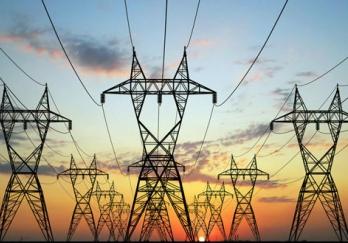Pakistan And Afghanistan Reach Agreement on Power
Concerns about CASA-1000's feasibility and scope remain unanswered.

NEW DELHI: Pakistan and Afghanistan have signed an agreement on electricity transit fees, paving the way for Pakistan to import power through the CASA 1000 project reaching upto 4000 MW.
The nearly $1 billion Central Asia South Asia electrical transmission line or CASA-1000, stretching 759 miles and connecting surplus hydroelectricity in Kyrgyzstan and Tajikistan to energy deficit Afghanistan and Pakistan, is the cornerstone of the United State’s “New Silk Road” project.
Welcoming the signing of the agreement between Pakistan and Afghanistan, the US Department of State issued a statement saying that the agreement marked “an important step in bilateral relations between Afghanistan and Pakistan, and one of the first foreign policy achievements of the new government of national unity in Kabul.”
However, concerns about CASA-1000’s feasibility and scope remain unanswered. Firstly, a key reason for the US to be so heavily invested in the region is to break the dependence of former Soviet bloc countries on Russia - a key player in Central Asia. Russia has committed nearly $2 billion to Kyrgyzstan’s Kambarata-1 dam and shown keen interest in financing Tajikistan’s Rogun dam. These dams are objected to by Uzbekistan, which has argued that they could be used as political tools threatening Uzbekistan’s water supply. Tashkent has linked its objection to CASA-1000 to the construction of these dams, and although plans for CASA-1000 have committed to only using existing surpluses, critics allege that Kyrgyzstan and Tajikistan will soon look beyond Afghanistan and Pakistan, which are within the purview of the CASA-1ooo project, to markets in India and China, which are currently not.
Ironically, CASA-1000’s success will be dependent on the US roping in Russia as opposed to excluding it, which it has thus far made no move to do. This is because of Russia’s long standing presence in the region, and the fact that Kyrgyzstan and Tajikistan could benefit from Russian involvement by playing the role of transit countries and not just suppliers, drawing on Russia’s vast energy resources and supplying it to Central Asia, Afghanistan, Pakistan, India and China.
Further, the project is in severe need of partners, with the Asian Development Bank - which was to finance 40 percent of the project - pulling out citing security risks. Finding invested partners will be a challenge given the fact the project runs through four of the most unstable countries in the world, and where, particularly in Afghanistan and Pakistan, US involvement has been violently targeted by the region’s militant groups.
At present, the project is based on a large investment of the tune of $1 billion, as stated in The Diplomat, “into the construction of an unprotected electric line with a vulnerable supply whose economic viability will depend on infrastructure that is 20 or 30 years old in a politically unstable region.” The countries in question do not have capacity, training or resources to guarantee the project’s long term success, which is dependent hence, on including Russia rather than attempting to sideline its role in the region.



